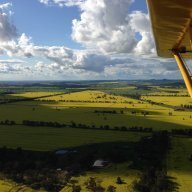I suspect with the loss of country (NCTL) based flying schools most pilot and instructor training is being conducted at Class D aerodromes. These newly trained pilots and instructors then move to country areas and lose their security blanket (ATS) and feel they need to talk a lot routinely, instructors then pass this onto their students. RAA pilots hear the charter / training flights make their routine 6 calls between 10NM and shutdown and think "if that's how the 'professionals' do it, then so should I".
Having returned to instructing at Class G aerodromes after a few years break, the difference in RT is very obvious, probably more so than for someone who has lived with the gradual changes. I studied the AIP and CAAP 166 prior to venturing back into class G and found nothing in the rules had changed, however the practices certainly have!
Provided there is no immediate likely hood of a collision, routine calls should be limited to
- Inbound
- joining circuit (or 3Nm final for a straight in app)
- a base call (if you really think it's warranted and for all circuit traffic)
For anyone in the circuit respond to inbound traffic with your call sign, type, position and intentions - this allows the inbound guy to start forming a mental picture (situational awareness).
For the naysayers, maybe have a chat with some of your mates one day when the circuit is quiet and go try circuits with 3 or 4 aircraft making only a lineup then turning base calls and see how it goes?



